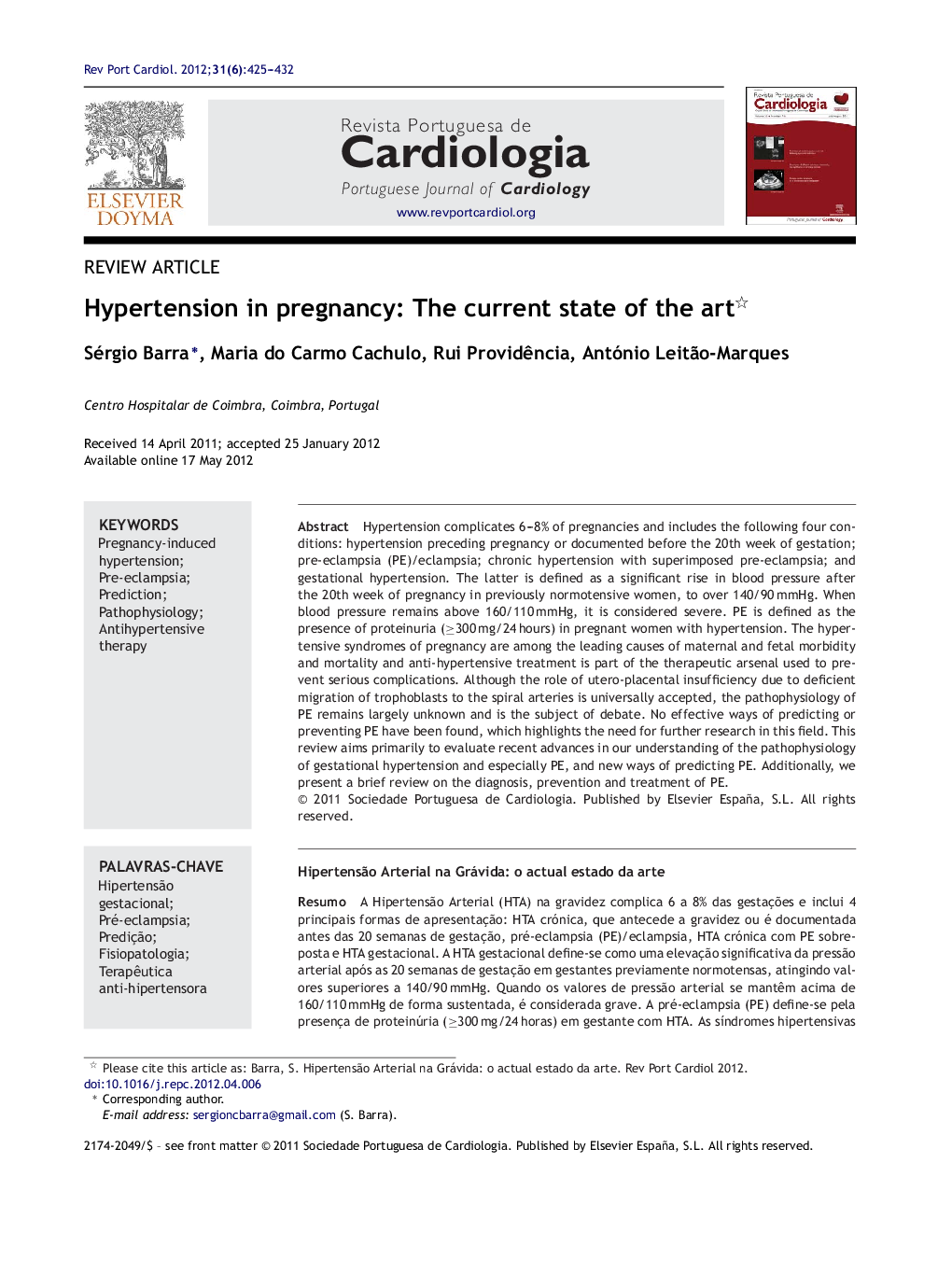| کد مقاله | کد نشریه | سال انتشار | مقاله انگلیسی | نسخه تمام متن |
|---|---|---|---|---|
| 3020770 | 1182324 | 2012 | 8 صفحه PDF | دانلود رایگان |

Hypertension complicates 6–8% of pregnancies and includes the following four conditions: hypertension preceding pregnancy or documented before the 20th week of gestation; pre-eclampsia (PE)/eclampsia; chronic hypertension with superimposed pre-eclampsia; and gestational hypertension. The latter is defined as a significant rise in blood pressure after the 20th week of pregnancy in previously normotensive women, to over 140/90 mmHg. When blood pressure remains above 160/110 mmHg, it is considered severe. PE is defined as the presence of proteinuria (≥300 mg/24 hours) in pregnant women with hypertension. The hypertensive syndromes of pregnancy are among the leading causes of maternal and fetal morbidity and mortality and anti-hypertensive treatment is part of the therapeutic arsenal used to prevent serious complications. Although the role of utero-placental insufficiency due to deficient migration of trophoblasts to the spiral arteries is universally accepted, the pathophysiology of PE remains largely unknown and is the subject of debate. No effective ways of predicting or preventing PE have been found, which highlights the need for further research in this field. This review aims primarily to evaluate recent advances in our understanding of the pathophysiology of gestational hypertension and especially PE, and new ways of predicting PE. Additionally, we present a brief review on the diagnosis, prevention and treatment of PE.
ResumoA Hipertensão Arterial (HTA) na gravidez complica 6 a 8% das gestações e inclui 4 principais formas de apresentação: HTA crónica, que antecede a gravidez ou é documentada antes das 20 semanas de gestação, pré-eclampsia (PE)/eclampsia, HTA crónica com PE sobreposta e HTA gestacional. A HTA gestacional define-se como uma elevação significativa da pressão arterial após as 20 semanas de gestação em gestantes previamente normotensas, atingindo valores superiores a 140/90 mmHg. Quando os valores de pressão arterial se mantêm acima de 160/110 mmHg de forma sustentada, é considerada grave. A pré-eclampsia (PE) define-se pela presença de proteinúria (≥300 mg/24 horas) em gestante com HTA. As síndromes hipertensivas da gravidez encontram-se entre as principais causas de morbimortalidade materno-fetal, sendo que a terapêutica anti-hipertensora faz parte do arsenal terapêutico utilizado na prevenção das suas graves complicações. Apesar do papel da insuficiência útero-placentária por deficiente migração dos trofoblastos para as artérias espiraladas ser universalmente aceite, a fisiopatologia da PE permanece ainda parcialmente uma incógnita e reúne alguma controvérsia. Historicamente, não são conhecidas formas suficientemente eficazes de predição e prevenção da PE, pelo que a investigação nesta área assume particular importância. Esta revisão visa primariamente avaliar os avanços científicos mais recentes nas áreas da fisiopatologia da HTA gestacional e, em particular, da PE e das novas formas de predição desta patologia. Concomitantemente, apresentamos informação sumária recente acerca do diagnóstico, prevenção e tratamento anti-hipertensor na PE.
Journal: Revista Portuguesa de Cardiologia (English Edition) - Volume 31, Issue 6, June 2012, Pages 425–432